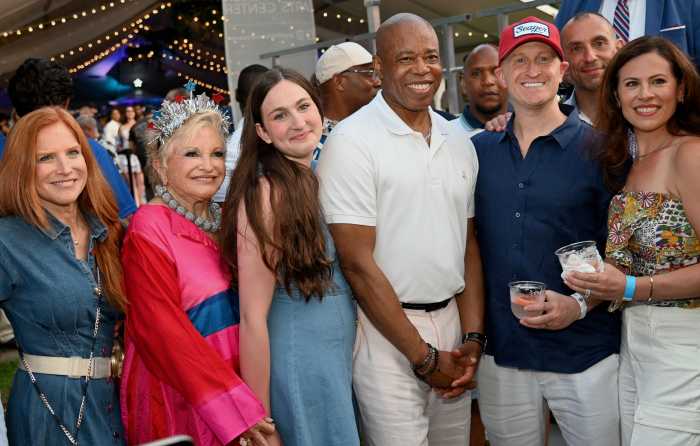Heralding Black History Month last Saturday and drawing attention to the history of the Garifuna people, cultural advocate James Lovell organized master Garifuna percussionists and dancers for a dynamic concert and conversation. In the National Museum of the American Indian in lower Manhattan, the perfect venue — the Diker Pavilion performance space was packed.
Feeling the music, Lovell gave an account of the rich Garifuna history to the diverse New York crowd of culture and music enthusiasts including many Garifuna nationals. “Cultural Ambassador” Lovell has made it his life’s work to preserve and promote Garifuna music and language.
He told of the landing in St. Vincent, explaining how the Garifuna are the mixing in the mid 17th century of three cultures — the intermingling of West Africans, the Loon (Arawak) and Kalinago (Carib) native Americans.
He spoke of their fight for nationhood and of Joseph Chatoyer, the Garifuna chief and leader, who resisted the British and was killed. Then there was the deportation of the population to the Honduran island of Roatan where the Garifuna suffered deprivation and struggle for survival.
Eventually the Garifuna arrived in Honduras and continued to settle in 56 villages along the Caribbean coasts of Belize, Guatemala and Nicaragua. Ultimately there were migrations to U.S. centers including the New York area where they’ve lived since the 50s.
Lovell brought the history up to the present. “There are human rights violations going on right now, he said. “As I’m speaking, there are people in Honduras dying because they’re taking them off their land.” He continued, “That’s why we sing, so we can expose it. That’s the reason the dancers dance, why the drummers drum, to expose it. We’re bringing it to the world.”

Additionally, in 2008, the Garifuna language along with Garifuna music and dance was named a Masterpiece of the Oral and Intangible Heritage of Humanity by UNESCO and is considered endangered.
The Garifuna drummers, dancers and guest singers added nuances to the textured program.
Then Lovell said, “I’m going to teach you a Garifuna song, repeat after me: Buiti biabi, buiti biabi (you are welcome), Anihan Feu yu, Wonqu Sungubei (There is a party here for everyone), Buiti biabi. After a few repetitions, the musicians accompanied as everyone in the audience sang.
During the last musical number, the dancers encouraged audience members to join them in dance and in a flash the floor was filled with young and old dancing to the engaging Garifuna rhythms and song. It was an afternoon when for a while, everyone was Garifuna.
The concert was presented in conjunction with the current exhibition “Cerámica de los Ancestros: Central America’s Past Revealed.”
Also, on exhibition in the pavilion is an ongoing collection of Native American art. The New York museum is a branch of the Smithsonian’s National Museum of American Indian — the main building is in Washington DC. A schedule of both venues is: nmai.si.edu/



























